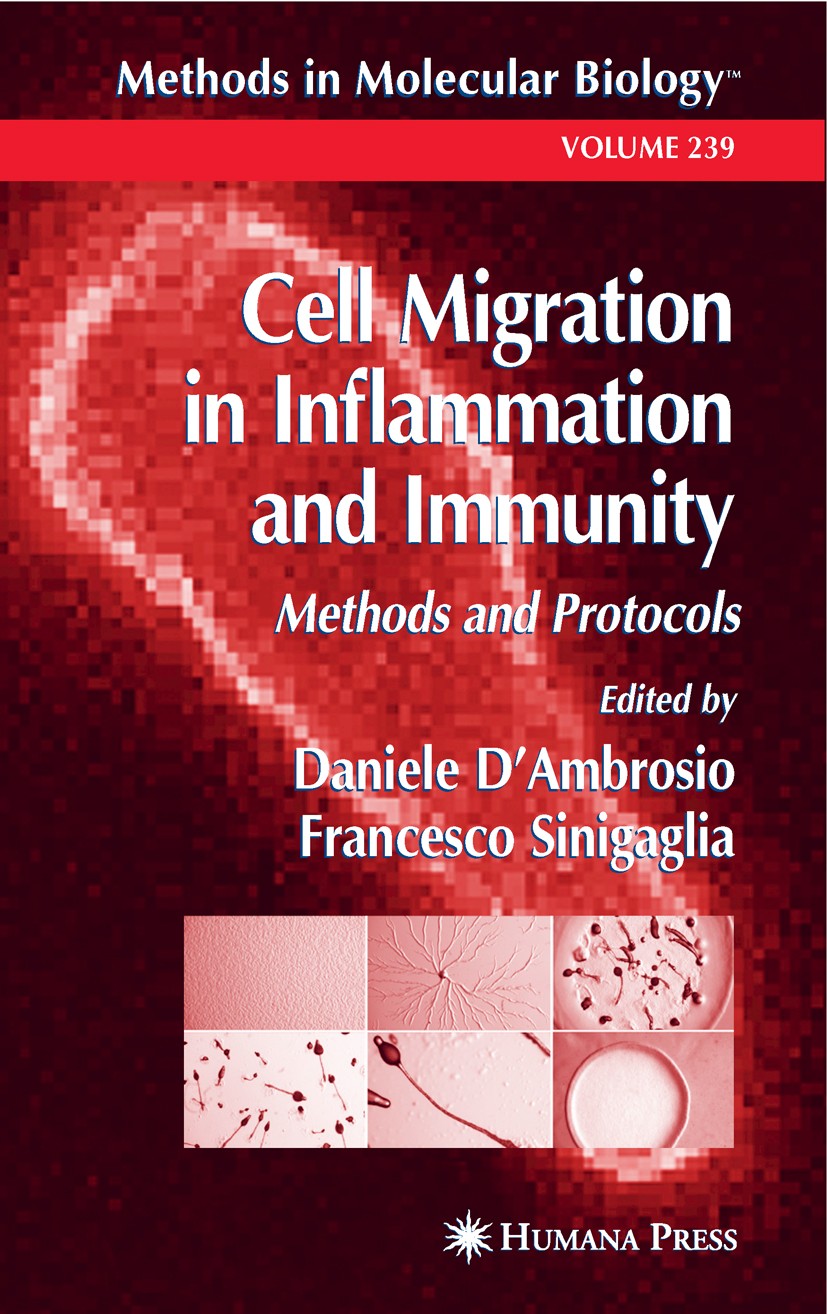| 书目名称 | Cell Migration in Inflammation and Immunity |
| 副标题 | Methods and Protocol |
| 编辑 | Daniele D’Ambrosio,Francesco Sinigaglia |
| 视频video | http://file.papertrans.cn/223/222849/222849.mp4 |
| 概述 | Includes supplementary material: |
| 丛书名称 | Methods in Molecular Biology |
| 图书封面 |  |
| 描述 | Chemokines and their receptors play a central role in the pathogenesis of numerous, perhaps all, acute and chronic inflammatory diseases. About 50 distinct chemokines produced by a variety cell types and tissues either c- stitutively or in response to inflammatory stimuli are involved in a plethora of biological processes. These small secreted proteins exert their exquisitely variegated functions upon binding to a family of seven-transmembrane spanning G-protein coupled receptors (GPCRs) composed of almost 20 distinct entities. The biological activities of chemokines range from the control of leukocyte trafficking in basal and inflammatory conditions to the regulation of hema- poiesis, angiogenesis, tissue architecture, and organogenesis. The basis for such diversified activities rests, on one hand, upon the ubiquitous nature of chemokine production and chemokine receptor expression. Virtually every cell type can produce chemokines and expresses a unique combination of chemokine receptors. On the other hand, chemokine receptors make use of a flexible and complex network of intracellular signaling machineries that can regulate a variety of cellular functions ranging from cell migrat |
| 出版日期 | Book 2003 |
| 版次 | 1 |
| doi | https://doi.org/10.1385/1592594352 |
| isbn_softcover | 978-1-61737-357-2 |
| isbn_ebook | 978-1-59259-435-1Series ISSN 1064-3745 Series E-ISSN 1940-6029 |
| issn_series | 1064-3745 |
| copyright | Humana Press 2003 |
 |Archiver|手机版|小黑屋|
派博传思国际
( 京公网安备110108008328)
GMT+8, 2025-11-15 00:02
|Archiver|手机版|小黑屋|
派博传思国际
( 京公网安备110108008328)
GMT+8, 2025-11-15 00:02


